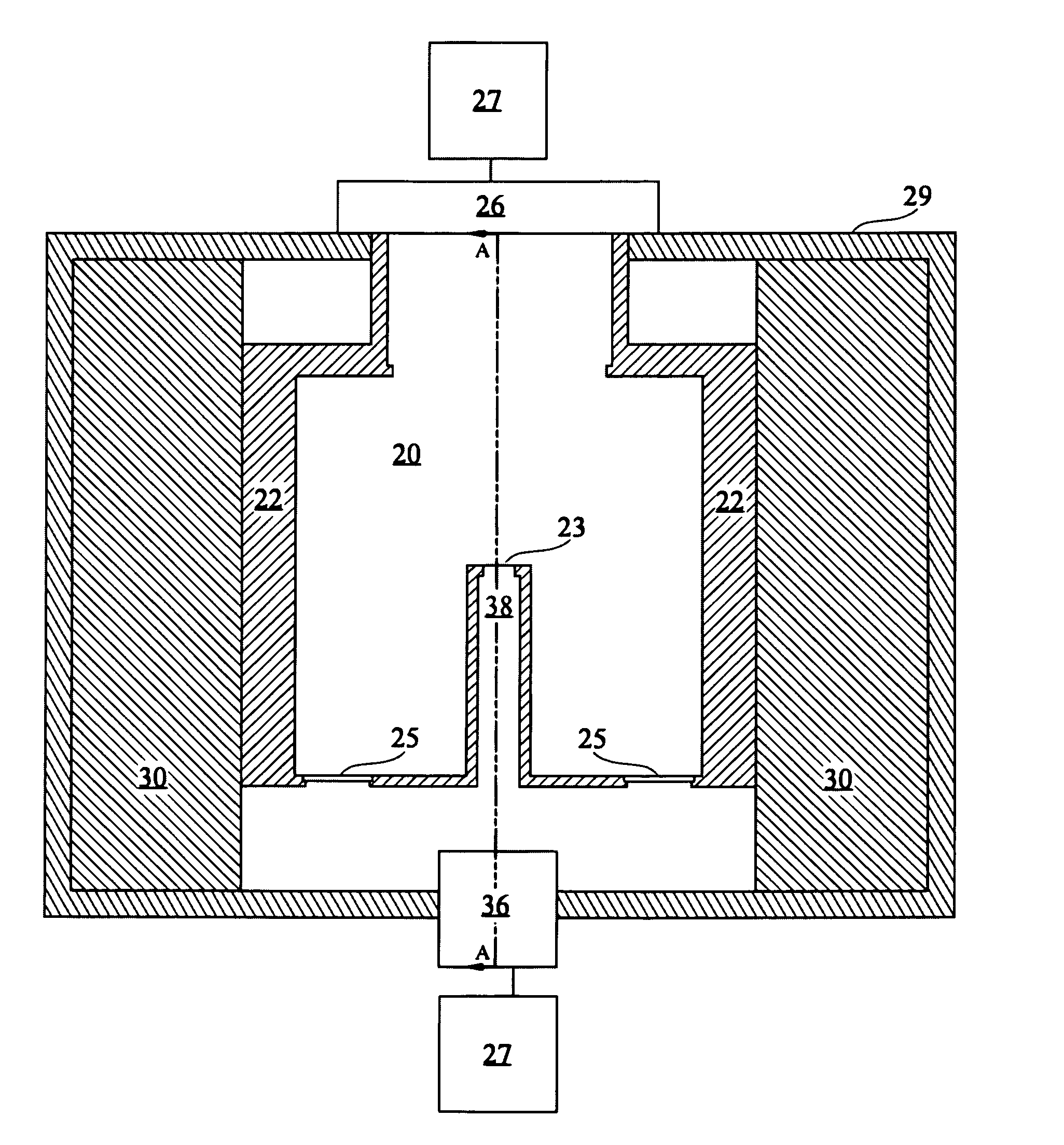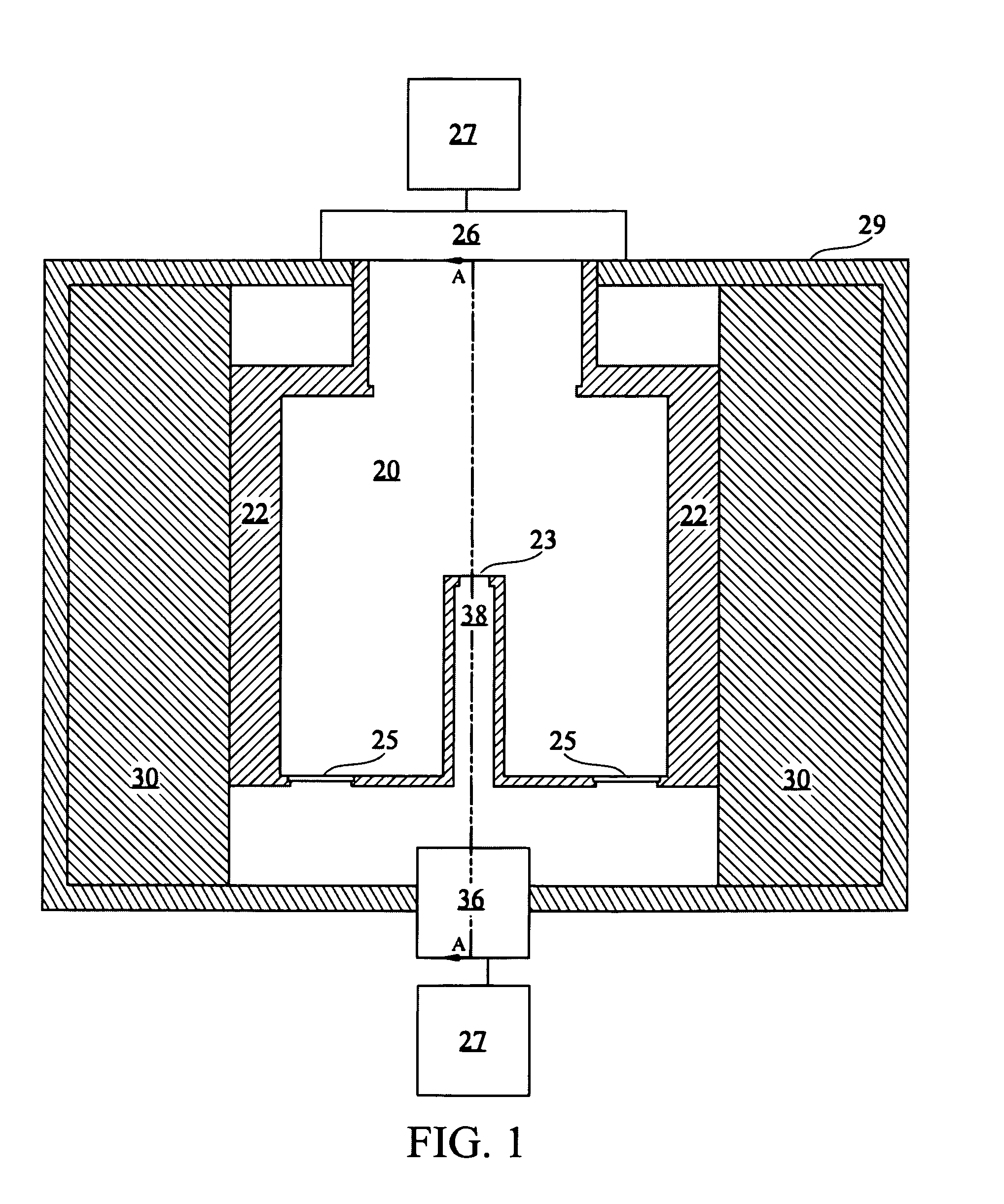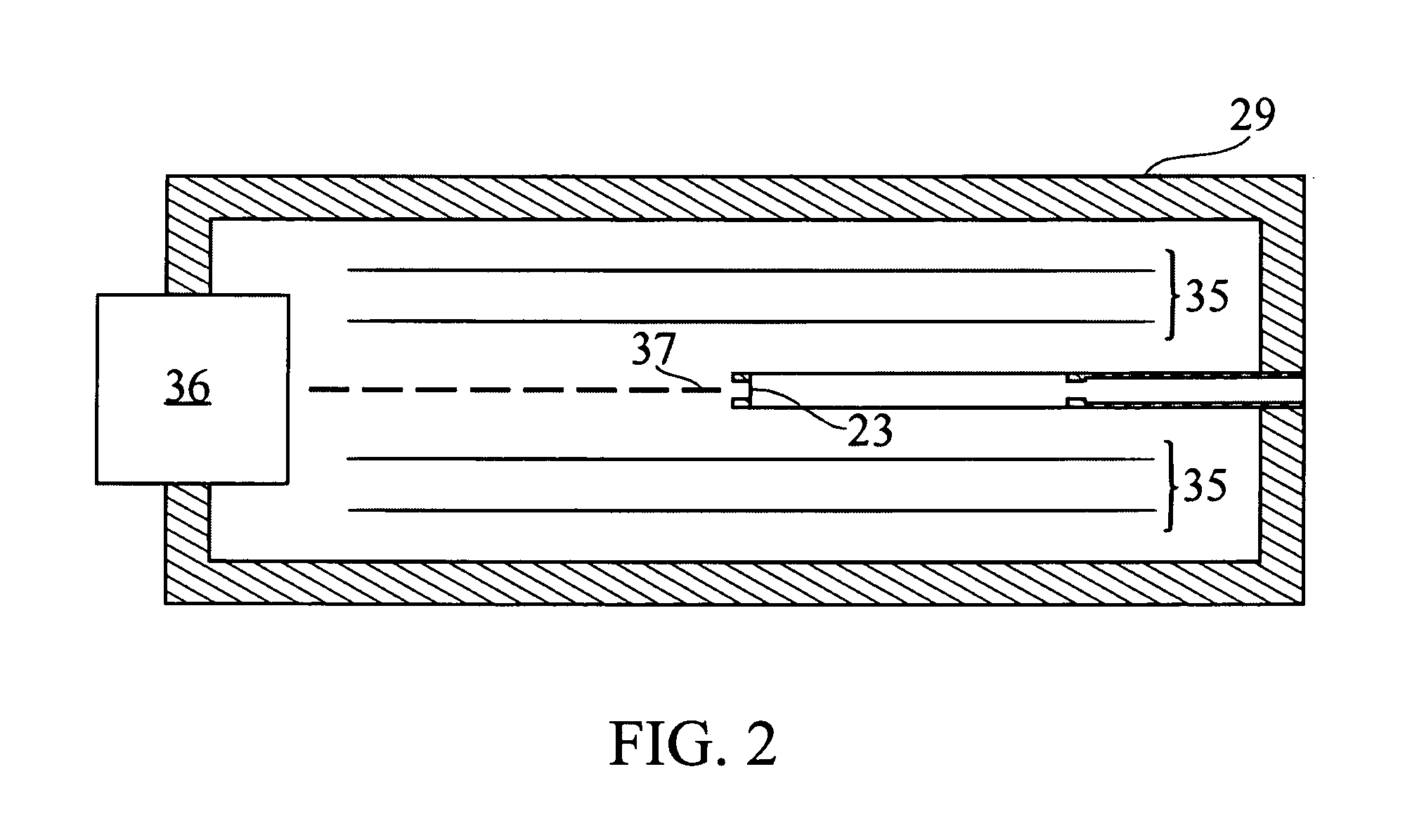Method and apparatus for the production of nuclear fusion
a nuclear fusion and apparatus technology, applied in the direction of nuclear targets, nuclear reactors, greenhouse gas reduction, etc., can solve the problems of large amount of charged particles, extreme difficulty in reaction containment, and prior art is incapable of utilizing the known highly desirable aneutronic fusion reactions, etc., to achieve low efficiency, increase the number of fusion events, and improve efficiency
- Summary
- Abstract
- Description
- Claims
- Application Information
AI Technical Summary
Benefits of technology
Problems solved by technology
Method used
Image
Examples
Embodiment Construction
[0029]While the design and usage of specific embodiments are discussed below, it should be understood that these discussions do not limit the scope of this invention, and that the broad concepts which are part of this invention may be usable in other specific embodiments which are not discussed below.
[0030]The solid state fusion device of the present invention includes a rectangular region of solid or powdered form reactant 20, into which ionic form reactant is fired longitudinally at fusion energies. Preferably this region will have a height much less than its width or depth. In one embodiment this region is placed between two thin conductive plates 21, and an insulating frame 22 is provided to separate the plates and allow solid form fuel to be contained within the resultant structure. A thin conductive window 23, electrically connected to the two conductive plates, is then provided in the insulating frame. Additionally, a plurality of filtered ports are provided in the insulating...
PUM
 Login to View More
Login to View More Abstract
Description
Claims
Application Information
 Login to View More
Login to View More - R&D
- Intellectual Property
- Life Sciences
- Materials
- Tech Scout
- Unparalleled Data Quality
- Higher Quality Content
- 60% Fewer Hallucinations
Browse by: Latest US Patents, China's latest patents, Technical Efficacy Thesaurus, Application Domain, Technology Topic, Popular Technical Reports.
© 2025 PatSnap. All rights reserved.Legal|Privacy policy|Modern Slavery Act Transparency Statement|Sitemap|About US| Contact US: help@patsnap.com



